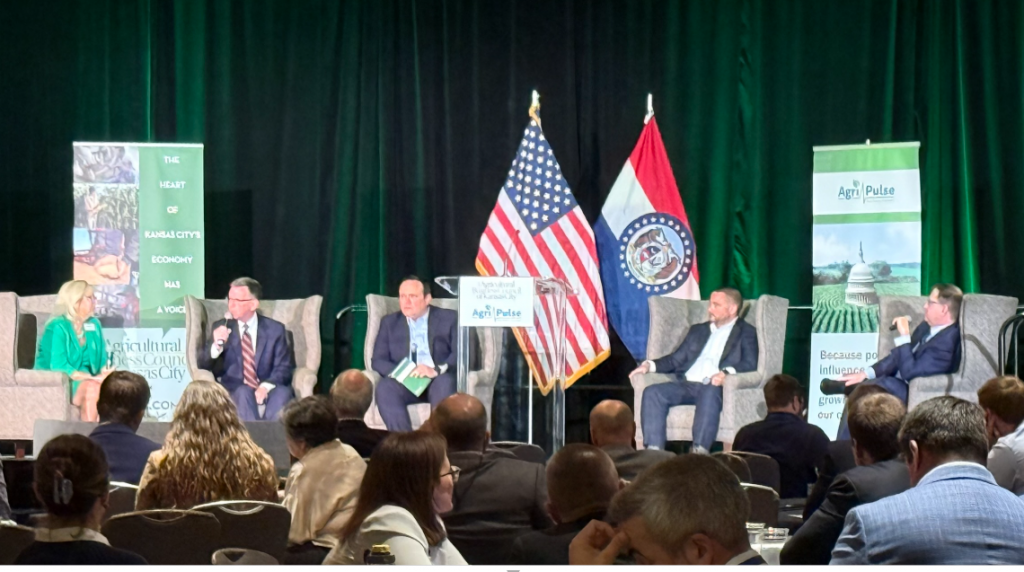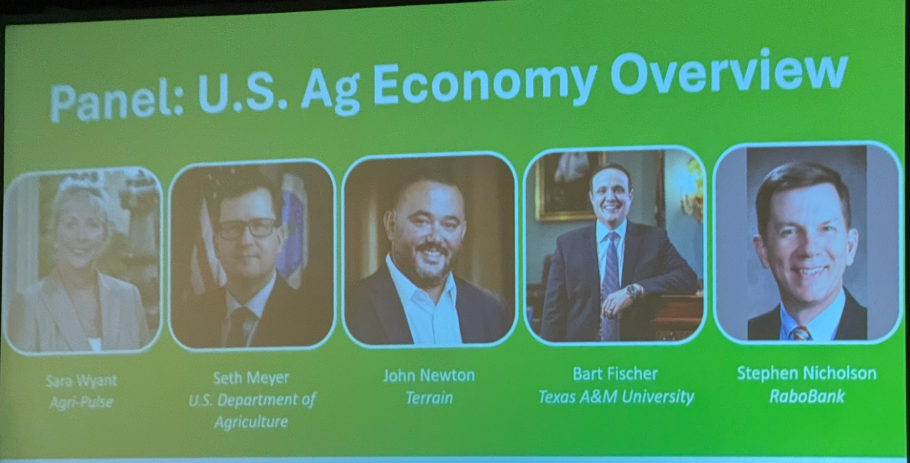
The U.S. agricultural economy is experiencing one of its most challenging periods in history, marked by a brutal three-year decline in crop cash receipts and escalating political tension surrounding federal aid. This was the consensus of experts at the Ag Outlook Forum, who discussed the current tight margins, the impact of recent legislation, and the difficult policy levers being considered by Washington.
The Depth of the Economic Crisis
John Newton (Executive Head of Terrain) highlighted the severity of the financial decline, stating that crop cash receipts are the lowest seen since 2007 and represent the “largest three-year decline that we’ve ever seen in history.”
- Working Capital Burn: Crop cash receipts are “down $71 billion from three years ago.” Newton shared that large, successful farmers are “just burning through working capital.”
- The Input Cost Squeeze: The current margin crisis is compounded by elevated input costs that began rising in 2021. Newton noted that without this “inflationary pressure,” current crop prices “would be above break even for a lot of folks.”
- Wider Than Soybeans: While most attention is on the soybean market, Newton stressed that the crisis is affecting the entire farm economy, citing major challenges in cotton, tree nuts, and the wine industry, where wine exports are down 96% due to tariffs impacting trade with Canada.

Legislative Efforts and the Cash Flow Gap
Congress has responded to the tight margin environment with two major legislative packages, but the timing of the relief has created a crucial cash flow gap for producers.
- The “One Big Beautiful Bill” (OB3): This bill provided a significant safety net investment with increased reference prices for commodity programs. However, the structure of commodity programs dictates that the relief will “not go to the farm until October of next year,” well after the upcoming midterms.
- American Relief Act (ARA) and ECAP: The ARA delivered $10 billion in economic relief via the Emergency Commodity Assistance Program (ECAP) to cover 2024 losses. However, the $10 billion only covered “26% of that loss”—a total loss of $36 billion.
- Continuing Exposure: Dr. Bart Fischer (Texas A&M) noted that even with the new OB3 improvements, the increased reference prices (10% to 20%) still “didn’t meet the moment” compared to the 30%+ increases in production costs over the last four years. The economic exposure for the current year is now estimated at about $46 billion.
Policy Levers and Pitfalls
The panel discussed the policy tools available to provide the immediate “bridge” funding farmers need to survive until the OB3 relief arrives.
- Idling Acreage: The panel rejected the idea of the U.S. idling millions of acres (like a voluntary CRP program) to reduce supply. Dr. Fischer argued that “I highly doubt Brazil is going to respond by saying, hey, us too,” and would instead take advantage.
- The Worst Policy: The panel generally agreed that making direct payments to cattle producers would be a poor policy choice, primarily because the cattle market is currently strong and does not require government intervention.
Trade, Politics, and a Look Ahead
The core of the problem, according to Fischer, is the lack of a coherent long-term trade strategy over the last four years, resulting in a necessary but painful “reset.”
- China’s Strategy: The current lack of soybean purchases from the U.S. is viewed as a pragmatic strategic move by China to “put maximum pressure on” the U.S. government during negotiations. John Newton noted, “They’ve stockpiled and they’ve made it pretty clear that they’re not willing to buy beans in the US right now.”
- The Logistics Advantage: The U.S. has a crucial advantage in logistics, as Brazil has struggled to move soybeans quickly enough out of ports like Santos, sometimes resulting in 30- to 45-day vessel wait times. This is often what draws buyers back to the U.S., despite the tariff situation.
- The Midterm Factor: The pressure to deliver aid now is intensified by the fact that the OB3’s reference price increases will “hit the farm after midterms,” creating a political motivation for a bridge payment.
- The Call for Normalcy: Dr. Fischer concluded that the government’s constant reliance on huge, end-of-year supplemental bills is a “terrible way to run a country,” which only serves to continue ramping up debt. He stated that AG has been forced into this model of “$130 billion in ad hoc assistance that has now gone on for eight years,” arguing the only way forward is for the country to figure out how to “get back to some normalcy” and tackle the rising debt.
The panel’s ultimate outlook remains one of optimism for agriculture’s long-term future, grounded in the fact that “people still have to eat every single day.” The challenge now is surviving the short-term crisis.

















